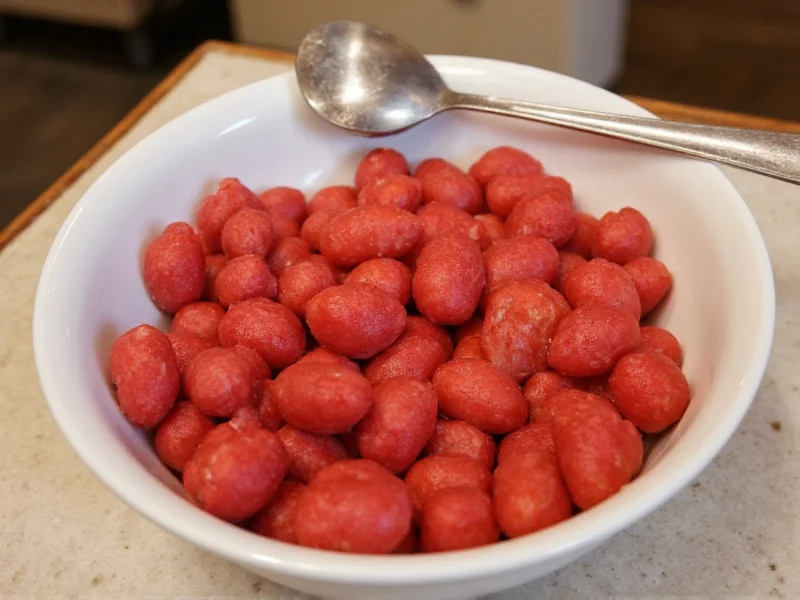What Exactly Is a Chamoyada?
A chamoyada represents one of Mexico's most beloved street beverages, combining the perfect balance of sweet, tangy, and spicy elements. This frozen drink originated in Mexican street food culture as a creative way to enjoy chamoy—a savory sauce made from pickled fruits, chilies, and spices. Unlike its cousin the mangonada (which focuses primarily on mango), a traditional chamoyada incorporates multiple flavor dimensions through its signature chamoy sauce base.
Authentic chamoyadas distinguish themselves through their complex flavor profile that evolves with each sip. The initial sweetness from ripe fruit gradually gives way to the sour punch of tamarind, finishing with a gentle chili warmth that tingles on your lips. Street vendors typically serve these drinks in distinctive plastic cups with extra chamoy drizzled down the inside and a generous chili-salt rim.
Essential Ingredients Breakdown
The magic of a perfect chamoyada lies in understanding each component's role. While mango remains the most popular fruit base, traditional recipes allow for seasonal variations using pineapple, watermelon, or even jicama.
| Ingredient | Key Function | Quality Tips |
|---|---|---|
| Chamoy sauce | Provides signature sweet-sour-spicy base | Choose brands with visible fruit pieces; avoid overly processed options |
| Ripe mango | Natural sweetness and creamy texture | Ataulfo or Kent varieties work best for smooth blending |
| Tamarind concentrate | Authentic sour depth | Paste form preferred over powder for richer flavor |
| Lime juice | Bright acidity to balance sweetness | Freshly squeezed only—bottled lacks vibrancy |
| Crushed ice | Creates slushy texture | Use filtered water ice for cleanest flavor |
Step-by-Step Preparation Guide
Creating an authentic chamoyada requires attention to texture and flavor balance. Follow these professional techniques for restaurant-quality results at home:
- Prepare your glass: Chill a 16-ounce glass while you make the drink. Mix 2 tbsp chili powder, 1 tbsp lime zest, and 1 tbsp salt. Moisten the rim with lime wedge and dip into the mixture.
- Drizzle chamoy: Pour 2 tablespoons of chamoy into the chilled glass and swirl to create decorative streaks down the interior.
- Blend ingredients: In a high-powered blender, combine 2 cups diced mango, 1/4 cup chamoy, 2 tablespoons tamarind concentrate, 2 tablespoons fresh lime juice, and 1 cup crushed ice. Blend on high for 30-45 seconds until completely smooth with no ice chunks.
- Adjust consistency: If too thick, add 1-2 tablespoons water. If too thin, add more ice and blend briefly.
- Final touches: Pour the mixture into your prepared glass. Top with additional chamoy drizzle and a sprinkle of chili-lime salt.
Perfecting Your Chamoyada Technique
Professional chamoyada makers emphasize three critical elements that separate good from exceptional:
Temperature control: All ingredients should be cold before blending. Warm fruit creates a watery texture as the ice melts too quickly. Freeze your mango chunks ahead of time for optimal thickness without dilution.
Chamoy quality assessment: Authentic chamoy contains visible fruit pieces and has a complex flavor profile beyond just sweet and spicy. Shake the bottle—you should hear fruit chunks moving. Avoid brands with artificial coloring or excessive preservatives that create an artificial taste.
Texture balance: The ideal chamoyada has a smooth, slushy consistency that holds its shape briefly when scooped. Too thick and it becomes difficult to drink; too thin and it lacks the satisfying mouthfeel that defines this beverage.
Popular Variations to Explore
Once you've mastered the basic chamoyada recipe, experiment with these authentic regional variations:
- Mangonada: The mango-specific version popularized in California, often served with a tamarind straw
- Piña chamoyada: Uses pineapple instead of mango for a brighter, more acidic profile
- Watermelon chamoyada: Perfect for summer with fresh watermelon and cucumber
- Spicy升级: Add a dash of habanero sauce for intense heat that complements the sweetness
- Creamy version: Blend in 1/4 cup Mexican crema for a richer texture (not traditional but popular)
Troubleshooting Common Issues
Even experienced makers encounter these challenges. Here's how to fix them:
Problem: Drink separates quickly
Solution: Increase tamarind concentrate by 1 teaspoon—its natural pectin helps stabilize the mixture. Blend longer to fully emulsify ingredients.
Problem: Too sweet
Solution: Balance with additional lime juice (1 teaspoon at a time) and a splash of tamarind. Never dilute with water as it weakens flavor.
Problem: Not spicy enough
Solution: Add chamoy gradually rather than using pre-mixed chili powders, which can create uneven heat distribution.
Serving and Storage Recommendations
Chamoyadas deliver their best experience when consumed immediately after preparation. The texture changes rapidly as the ice melts and ingredients separate. For special occasions, prepare components separately and blend just before serving.
If you must store leftovers, place in an airtight container in the freezer. The texture will become icier upon thawing. To refresh, blend with 1-2 ice cubes and a splash of fresh lime juice. Never refrigerate—this creates an unpleasant watery consistency.
Traditional Mexican street vendors often serve chamoyadas with a tamarind candy straw that doubles as a stirrer and edible garnish. This practice originated as a practical solution to the drink's tendency to separate, allowing consumers to remix flavors as they drink.











 浙公网安备
33010002000092号
浙公网安备
33010002000092号 浙B2-20120091-4
浙B2-20120091-4